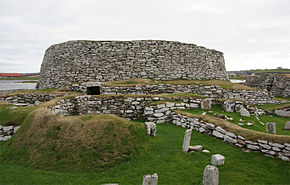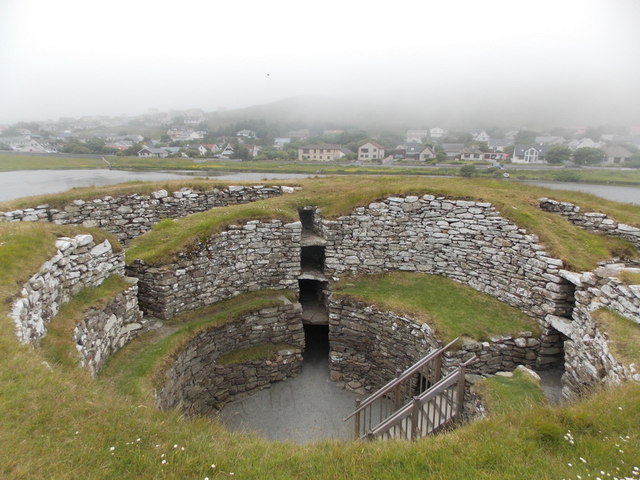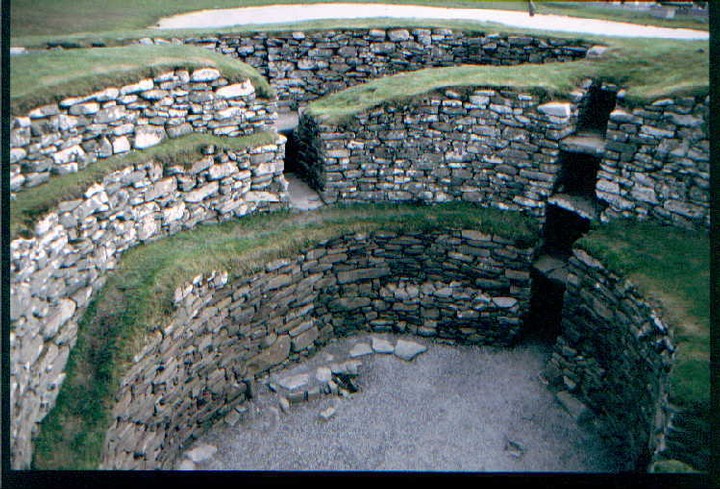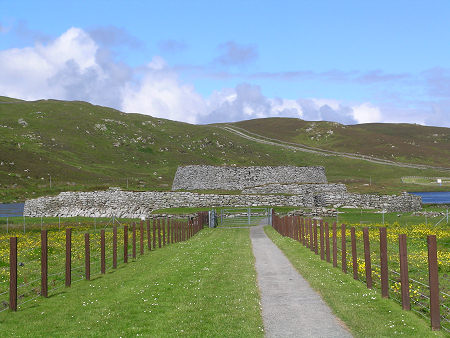Broch of Clickimin
The approximately 2,000 -year-old Broch of Clickimin (also Clickhimin ) is a former island on the south bank of the " Loch of Clickimin ", southwest of Lerwick on the Shetland islands belonging to Scotland. The obtained residues in Broch of Clickimin is next to the Broch of Mousa the best preserved in the Shetlands and also one of the best preserved ever.
While the Nordic Bronze Age, around 700 BC, a first oval stone was on the overgrown grass and surrounded by swamp small island, which was reached by a causeway, built, similar to the orkadischen systems of Skara Brae. Its remains are located on the northwest wall of the Broch.
To 200 the dam was interrupted to the island by a moat and around the island a stronger wall was built. Wooden houses with thatched roofs were erected inside the fence. At this time, the hole of Clickimin was cut off from the sea. Around 100 BC one about eight feet long, free-standing, so-called " block house" remains the only gate was built in the older wall. There is ever a cell on both sides of the passage through the five -meter thick block house. In contrast to other Shetland " block houses" but the cells could only be reached from the upper floor. The staircase at the west end of the log cabin is preserved. There were traces of buildings inside the fence.
Originally greater than today, this phase of Clickimin was never finished, because the work on Broch, the most striking feature of the island began. The Broch was with an inner diameter of about 10 m up to 12-15 m high initially, with no stairs in his unusually strong wall. From the interior of two T-shaped side niches are achievable. Some time later, the Broch has been reduced in height.
At the same time was the Bronze Age building, roughly 700 years after its construction, re-used. Suspects is also that at this time the stone slab found on the dam with the sunken footprints, one of the strangest discoveries of Clickimin, was added, the purpose of which is unknown. Similar footprints, as they were found in Dunadd in Argyll and Bute are brought in connection with the inauguration ceremonies of royalty.
In the 1850s undermined the " Lords of Lerwick " according to the Victorian taste for archeology from the hill and " restored " what they had found. Clickimin was then excavated archaeologically in the 1950s. Evidence of agriculture in the environment succeeded by barley on the floor of stone troughs, one of which is seen in Clickimin.










